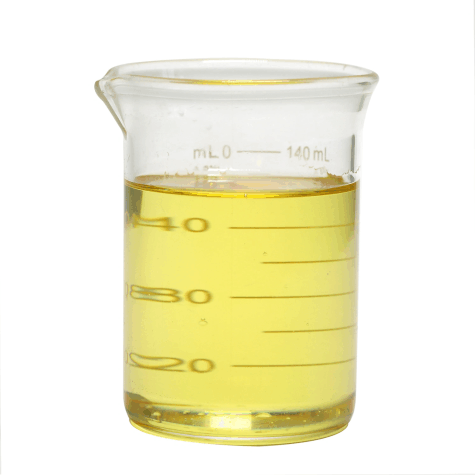What is Polyglycerol Oleate (PGO) and How is it Made?
Polyglycerol oleate (PGO) is an emulsifier
derived from a mixture of polyglycerol and oleic acid, both of which come from natural sources. PGO is commonly used in food products such as baked goods, margarine, and ice cream to improve texture, stability, and shelf life. It is also used in cosmetic products such as lotions and creams to stabilize emulsions and improve texture.
What is Polyglycerol
Polyglycerol is a polymer made up of glycerol molecules and can be derived from various natural sources.
What is Oleic acid?
Oleic acid is a fatty acid that is commonly found in natural sources.
What are the NATURAL sources?
Polyglycerol
Natural Sources- Vegetable oils such as soybean, sunflower, and canola oil
- Animal fats such as lard and tallow
- Seaweeds
- Beeswax
- Cocoa butter
- Milk fat
- Egg yolk
- Corn syrup
Oleic acid
Natural Sources- Olive oil
- Avocado oil
- Peanut oil
- Almond oil
- Macadamia nut oil
- Animal fats such as beef and pork
- Some types of fish, such as salmon and tuna
- Various seeds, including sunflower, pumpkin, and sesame seeds.
Is PGO Safe for Use in Food and Cosmetic Products?
Yes, PGO is considered safe for use in food and cosmetic products by regulatory bodies such as the FDA and the EU’s Scientific Committee on Consumer Safety (SCCS). However, it can cause skin irritation or allergic reactions in some people, especially in high concentrations. It’s important to carefully research and consider the safety and potential risks before use.
Why use PGO in a Family Bug Spray?
As an inert ingredient, PGO is not intended to have any pesticidal activity, but rather to act as a carrier for the active ingredients in the product.
Are there benefits of using Polyglcerol Oleate on the skin?
Yes!
Moisturizing: Polyglycerol oleate is a humectant, which means it can help to attract and retain moisture in the skin. This can help to improve skin hydration and prevent dryness and flakiness.
Softening: Polyglycerol oleate can help to soften and smooth the skin’s texture, making it feel more supple and elastic.
Emollient: Polyglycerol oleate can help to form a protective barrier on the skin, which can help to prevent moisture loss and protect the skin from environmental stressors.
Gentle: Polyglycerol oleate is a mild ingredient that is well-tolerated by most skin types, including sensitive skin.
Non-comedogenic: Polyglycerol oleate is non-comedogenic, meaning it is unlikely to clog pores and cause breakouts.
Timeline of the Usage of
Polyglycerol Oleate- Late 19th century: The use of emulsifiers in food production becomes widespread, with lecithin and egg yolk being the most commonly used emulsifiers at the time.
- 1920s: Researchers begin experimenting with the use of monoglycerides and diglycerides as emulsifiers in food products.
- 1950s: The use of synthetic emulsifiers becomes more common in food production.
- 1980s: Polyglycerol esters, including PGO, begin to be used as food emulsifiers.
- 2000s: PGO is approved for use in cosmetic products as a stabilizer and emulsifier.
- Present day: PGO is commonly used in a variety of food and cosmetic products for its emulsifying and stabilizing properties.
What does polyglycerol oleate look like?
Generally, polyglycerol oleate is a yellowish to amber-colored liquid with a slightly viscous texture. It is soluble in oils and fats but insoluble in water.

Learn more about Polyglycerol Oleate
"Polyglyceryl Oleate: A Natural Emulsifier with Unique Performance Characteristics"
by Hallstar

References:
Kim, H. Y., & Lim, S. T. (2014). Formation of polyglycerol fatty acid esters using different catalysts: optimization and characterization. Journal of oleo science, 63(3), 281-289.
Le Feuvre, R. A., Taylor, T. M., & Patel, H. (2019). Recent advances in the application of polyglycerol esters of fatty acids in food emulsions. Current Opinion in Food Science, 28, 33-38.
Fernández, M. A., & Kinsella, J. E. (1979). Milk fat globule membrane lipids: preparation and structural studies of polyglycerol esters from buttermilk. Journal of Agricultural and Food Chemistry, 27(1), 68-73.
Takahashi, Y., Nagao, T., & Ohta, A. (2009). Characterization of polyglycerol fatty acid esters synthesized from beeswax. Journal of oleo science, 58(5), 245-251.
Tan, D., & Horowitz, M. (2017). Oleic acid: An advantageous lipid for formulations. Current drug delivery, 14(6), 743-751.
Gogus, F., & Ozel, M. Z. (2008). Fatty acid composition of vegetable oil blends sold in Turkey. Grasas y Aceites, 59(3), 251-257.
